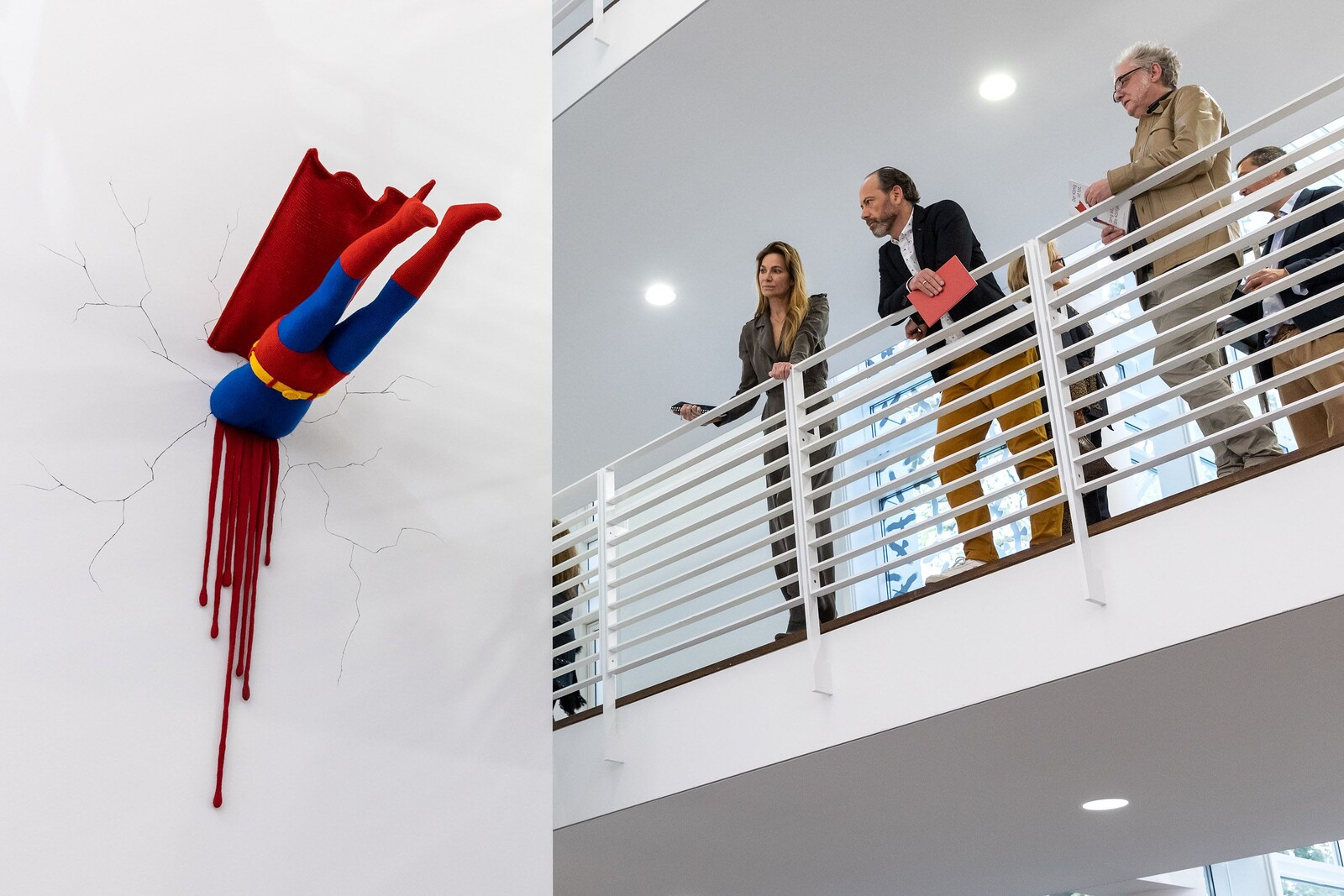May 13–October 8, 2023
Lichtentaler Allee 8 b
76530 Baden-Baden
Germany
Hours: Tuesday–Sunday 10am–6pm
T +49 7221 398980
office@museum-frieder-burda.de
Curated by Udo Kittelmann.
Artists: Hiba Alansari, Thuraya Al-Baqsami, Monira Al Qadiri, Rosa Barba, Alexandra Bircken, Monica Bonvicini, Leda Bourgogne, Kerstin Brätsch, Tania Bruguera, Ceal Floyer, Galli, Asta Gröting, Roey Victoria Heifetz, Almut Heise, Leila Hekmat, Leiko Ikemura, Anne Imhof, Annette Kelm, Conny Maier, Heidi Manthey, Beatriz Morales, Sara Nabil, Helga Paris, Adrian Piper, Lin May Saeed, Karin Sander, Julia Scher, Marianna Simnett , Sturtevant, Rosemarie Trockel, Patricia Waller
“In chess there are no secrets, only undiscovered truths.” —Savielly Tartakower (1887–1956)
This is an exhibition of our time: Superman is thwarted and hits a wall, an oversized hybrid female hare offers motherly protection, a pair of seahorses switch traditional gender roles, and passion creates sparks. With a selection of contemporary works by thirty-one female artists of different generations and cultural influences, the exhibition at the Museum Frieder Burda presents exclusively female positions and their wide spectrum of themes.
Peggy Guggenheim (1898–1979) was an art collector, gallerist, and patron of the arts. The legendary American is considered a pioneer and supporter of international avant-garde artists ranging from Max Ernst and Marcel Duchamp to Jackson Pollock. She, too, experienced her role as a woman in an expanding and male dominated art scene as ambivalent.
Exactly eighty years ago, Guggenheim presented in her visionary gallery Art of this Century in New York, the exhibition titled Exhibition by 31 Women, an early example of a show featuring women artists. Marcel Duchamp (1887–1968), one of the key figures in twentieth-century art and a longtime friend of Guggenheim’s, advised her on the show. Duchamp, who was also a passionate chess player, provided the title and concept for the exhibition. As is well known, the queen is the most powerful figure in chess, while the king has a limited radius of action and depends on the other figures for protection. Contemporary critics reacted with reluctant admiration and condescending disregard. The verdicts culminated in a review by James Stern, the art critic of the influential magazine TIME, who rejected the exhibition since he had never seen a “first-class woman artist.” How wrong could a critic be!
The conceptual foundation of this historic exhibition is now taken up by The King is Dead, Long Live the Queen, which will likewise present the work of thirty-one contemporary women artists who reflect on recent aesthetic, political and social transformations. These artists prove to be witnesses of their time which is always our time as well. The exhibition aims to allow the presented works to have their own voices, which are free and independent of the ideological debates that are so prevalent in the cultural environment.
Udo Kittelmann, the curator of the exhibition and artistic director of the museum, has invited artists who were decisive both for him, personally, in his extensive career and in their own context. The presentation unites works from various disciplines, including painting, sculpture, photography, film, sound, and installation. The works contribute to the overall narrative staging of the exhibition while also remaining focused as distinctive individual voices. Kittelmann explains, “The exhibition gives the works a voice and believes in their power and meaning, allowing some of them to be loud and others to assert themselves subtly and quietly.”












